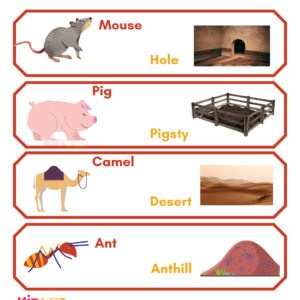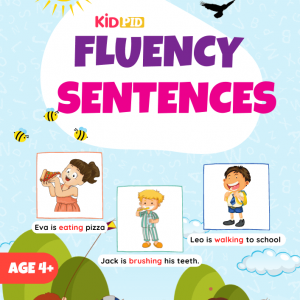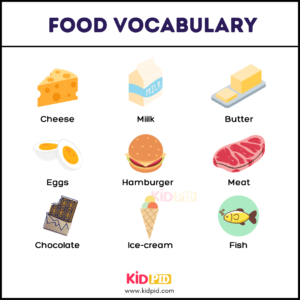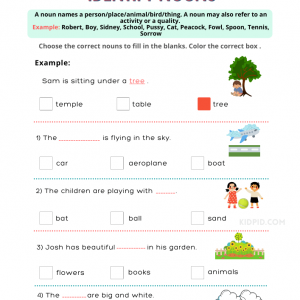
Aarushi
TeacherForum Replies Created
-
-
Aarushi
MemberJune 5, 2023 at 7:31 pm in reply to: Green pigment present in plants used for photosynthesis -
::
Photosynthesis is a complex process that involves both physical and chemical changes. It can be considered as a combination of physical and chemical processes.<div>
</div><div>During photosynthesis, plants, algae, and some bacteria use sunlight, carbon dioxide, and water to produce glucose (a sugar) and oxygen. The overall process can be summarized by the following chemical equation:</div><div>
</div><div>6CO2 + 6H2O + light energy → C6H12O6 + 6O2</div><div>
</div><div>The process begins with the absorption of light energy by specialized molecules called chlorophyll, which are located in the chloroplasts of plant cells. This absorption of light is a physical change as it involves the transfer of energy from the photons of light to the chlorophyll molecules.</div><div>
</div><div>The absorbed light energy is then used to power a series of chemical reactions, including the splitting of water molecules (photolysis) and the conversion of carbon dioxide into glucose. These chemical reactions involve the breaking and formation of chemical bonds, which result in the rearrangement of atoms to produce glucose and oxygen. These chemical changes are the main part of photosynthesis.</div><div>
</div><div>So, while the absorption of light is a physical change, the subsequent chemical reactions that convert carbon dioxide and water into glucose and oxygen are chemical changes. Overall, photosynthesis can be considered a combination of both physical and chemical processes.</div> -
::
The brain is a complex organ with various regions involved in different aspects of cognition and emotion. The three main areas commonly associated with controlling thoughts, memory, and emotions are the prefrontal cortex, hippocampus, and amygdala.<div>
</div><div>Prefrontal Cortex: The prefrontal cortex, located in the frontal lobe of the brain, is involved in executive functions, including decision-making, problem-solving, planning, and cognitive control. It helps regulate thoughts, reasoning, and judgment. Additionally, it plays a role in working memory, which is responsible for temporarily holding and manipulating information.</div><div>
</div><div>Hippocampus: The hippocampus, located deep within the temporal lobe, is crucial for the formation and retrieval of long-term memories. It is involved in consolidating information from short-term memory into long-term memory and spatial navigation. The hippocampus also interacts with other brain regions to support memory recall and contextual associations.</div><div>
</div><div>Amygdala: The amygdala, which is part of the limbic system, plays a significant role in processing emotions and emotional memories. It helps in recognizing and responding to emotionally significant stimuli, including fear, pleasure, and aggression. The amygdala is involved in the formation of emotional memories and the regulation of emotional responses.</div><div>
</div><div>It’s important to note that while these brain regions are associated with specific functions, they work in coordination with other areas and often interact with each other to carry out complex cognitive and emotional processes. The brain is a highly interconnected network, and multiple regions contribute to various aspects of our thoughts, memory, and emotions.</div> -
::
Nutrition refers to the process by which organisms obtain and utilize nutrients from food for growth, development, maintenance, and overall well-being. It involves the intake, digestion, absorption, transport, utilization, and excretion of nutrients by the body.
Nutrients are substances that are essential for the proper functioning of the body and are obtained through the diet. The main categories of nutrients include:
-
Macronutrients: These are the nutrients required in larger quantities and provide energy to the body. They include carbohydrates, proteins, and fats. Carbohydrates are a major source of energy, proteins are essential for building and repairing tissues, and fats are important for energy storage and various bodily functions.
-
Micronutrients: These are nutrients required in smaller quantities but are vital for the proper functioning of the body. Micronutrients include vitamins and minerals. Vitamins are organic compounds that are necessary for various biochemical reactions in the body, while minerals are inorganic substances required for physiological processes such as bone formation, nerve function, and enzyme activity.
-
Water: Although not technically a nutrient, water is essential for life and is involved in numerous bodily functions. It helps regulate body temperature, aids in digestion, transports nutrients, and eliminates waste products.
Proper nutrition is crucial for maintaining good health and preventing various diseases. A balanced diet that includes a variety of foods from different food groups is important to ensure an adequate intake of all essential nutrients. Additionally, individual nutritional needs may vary based on factors such as age, sex, activity level, and overall health.
It’s worth noting that nutrition is not only limited to human beings but applies to all living organisms. Different organisms have different nutritional requirements depending on their species, habitat, and metabolic processes.
-
-
::
Reptiles are a diverse group of cold-blooded vertebrates belonging to the class Reptilia. They are characterized by several distinct features that differentiate them from other animal groups.<div>
</div><div>Scale-covered skin: Reptiles have dry, scaly skin that helps them conserve water and protect against desiccation. The scales are made of keratin, the same material found in human hair and nails.</div><div>
</div><div>Ectothermic metabolism: Reptiles are ectothermic, meaning they rely on external sources of heat to regulate their body temperature. Unlike warm-blooded mammals and birds, reptiles do not generate their own internal heat.</div><div>
</div><div>Terrestrial adaptation: While some reptiles can live in aquatic environments, the majority are adapted to terrestrial life. They have well-developed limbs or, in some cases, are limbless (e.g., snakes). This allows them to move effectively on land.</div><div>
</div><div>Respiratory system: Reptiles breathe using lungs. They have a more efficient respiratory system compared to amphibians, allowing them to extract more oxygen from the air.</div><div>
</div><div>Reproduction and development: Most reptiles lay amniotic eggs, enclosed in a protective shell that prevents desiccation. This adaptation frees them from the need for an aquatic environment for reproduction, unlike amphibians. However, some reptiles give live birth, including certain species of snakes and lizards.</div><div>
</div><div>Reptiles encompass several different groups, including turtles, snakes, lizards, crocodilians (such as crocodiles and alligators), and tuatara (a reptile found in New Zealand). They inhabit a wide range of habitats across the globe, from deserts to forests, and play important roles in ecosystems as predators, prey, and ecosystem engineers.</div><div>
</div><div>Reptiles have been around for millions of years and have evolved numerous adaptations that have allowed them to thrive in diverse environments. They are an ancient and fascinating group of animals that have adapted to survive in various ecological niches.</div>
 Animal Habitats
Animal Habitats  Common Confusing English Words with Meaning
Common Confusing English Words with Meaning  Fluency Sentences Book for Children Age 4 -8 Years
Fluency Sentences Book for Children Age 4 -8 Years  English Vocabulary For Kids
English Vocabulary For Kids  Possessive Pronouns Worksheets for Grade 1
Possessive Pronouns Worksheets for Grade 1  Identifying Nouns Worksheets for Grade 2
Identifying Nouns Worksheets for Grade 2  Alphabet Writing Practice Sheet
Alphabet Writing Practice Sheet